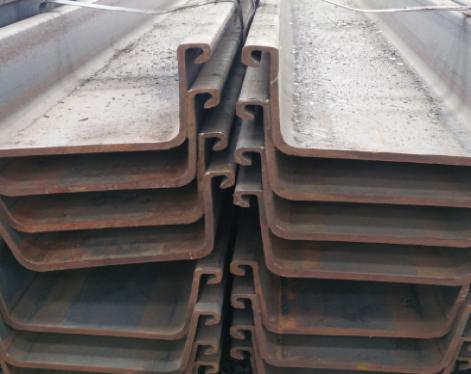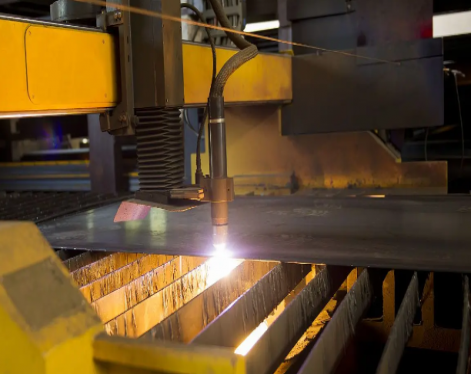Steel sheet piles are a foundation treatment method widely used in construction projects, and are especially suitable for areas with complex geological conditions. It consists of a series of steel plates that are interconnected to form an envelope to support the soil and thereby strengthen the foundation. Under complex geological conditions, steel sheet piles need to be selected and used more carefully.
Under complex geological conditions, the key to selecting and using steel sheet piles is to ensure the safety and efficiency of construction while taking into account cost control and environmental impact. Here are some key points:
1. Geological survey
First, a detailed geological survey must be carried out to understand the geological structure, soil properties and other information.
2. Comparison and selection of construction plans
Based on the geological conditions, foundation pit depth and surrounding environment of the specific project, the most suitable construction plan is selected through comparative analysis of multiple plans.

3. Selection of steel sheet piles
Select the appropriate steel sheet pile type and specification based on geological conditions. For example, under water-rich and complex geological conditions, using composite steel sheet piles instead of ordinary steel sheet piles can reduce the support in the foundation pit, speed up the construction progress, and reduce construction costs. Longer, thicker steel sheet piles may need to be selected in soft soils.
4. Adjustment and application of construction technology
Special construction methods and measures must be adopted during the construction process, such as adjusting the piling sequence and adopting auxiliary reinforcement measures. At the same time, monitoring and early warning should be strengthened to detect and deal with possible problems in a timely manner.
Steel sheet pile support technology can improve construction efficiency, reduce construction time through rapid installation and removal, provide stable support walls, reduce soil deformation, and improve construction efficiency. At the same time, this technology can ensure construction quality, has high stiffness and stability, effectively controls soil deformation and displacement, and ensures construction safety.
For example, when encountering special geological conditions such as underground caves, special treatment plans need to be formulated to ensure construction safety and support effects. Moreover, it is necessary to work closely with geological experts and construction teams to jointly develop the optimal construction plan.
5. Cost and environmental considerations
Steel sheet pile support technology has advantages in cost control, reducing the amount of earth excavation and the consumption of supporting materials, and reducing the project cost. In addition, this technology has less impact on the environment, reducing earth excavation and waste through clean prefabrication and cast-in-situ processes, meeting the requirements of sustainable development.
6. Optimization of design and construction
Through finite element model analysis, the foundation pit retaining pile design plans were compared, and combined steel sheet piles were used to reduce the support in the foundation pit, speed up the construction progress, and reduce construction costs. At the same time, a set of methods for quickly inserting Larsen steel sheet piles in sand layers is summarized, which is economical and practical and provides reference experience for similar projects.
In summary, when selecting and using steel sheet piles, factors such as geological conditions, construction plans, technology application, cost control, and environmental impact should be comprehensively considered to ensure the safety, efficiency, and economic benefits of the project.
Under complex geological conditions, the key to selecting and using steel sheet piles is to ensure the safety and efficiency of construction while taking into account cost control and environmental impact. Here are some key points:
1. Geological survey
First, a detailed geological survey must be carried out to understand the geological structure, soil properties and other information.
2. Comparison and selection of construction plans
Based on the geological conditions, foundation pit depth and surrounding environment of the specific project, the most suitable construction plan is selected through comparative analysis of multiple plans.

3. Selection of steel sheet piles
Select the appropriate steel sheet pile type and specification based on geological conditions. For example, under water-rich and complex geological conditions, using composite steel sheet piles instead of ordinary steel sheet piles can reduce the support in the foundation pit, speed up the construction progress, and reduce construction costs. Longer, thicker steel sheet piles may need to be selected in soft soils.
4. Adjustment and application of construction technology
Special construction methods and measures must be adopted during the construction process, such as adjusting the piling sequence and adopting auxiliary reinforcement measures. At the same time, monitoring and early warning should be strengthened to detect and deal with possible problems in a timely manner.
Steel sheet pile support technology can improve construction efficiency, reduce construction time through rapid installation and removal, provide stable support walls, reduce soil deformation, and improve construction efficiency. At the same time, this technology can ensure construction quality, has high stiffness and stability, effectively controls soil deformation and displacement, and ensures construction safety.
For example, when encountering special geological conditions such as underground caves, special treatment plans need to be formulated to ensure construction safety and support effects. Moreover, it is necessary to work closely with geological experts and construction teams to jointly develop the optimal construction plan.
5. Cost and environmental considerations
Steel sheet pile support technology has advantages in cost control, reducing the amount of earth excavation and the consumption of supporting materials, and reducing the project cost. In addition, this technology has less impact on the environment, reducing earth excavation and waste through clean prefabrication and cast-in-situ processes, meeting the requirements of sustainable development.
6. Optimization of design and construction
Through finite element model analysis, the foundation pit retaining pile design plans were compared, and combined steel sheet piles were used to reduce the support in the foundation pit, speed up the construction progress, and reduce construction costs. At the same time, a set of methods for quickly inserting Larsen steel sheet piles in sand layers is summarized, which is economical and practical and provides reference experience for similar projects.
In summary, when selecting and using steel sheet piles, factors such as geological conditions, construction plans, technology application, cost control, and environmental impact should be comprehensively considered to ensure the safety, efficiency, and economic benefits of the project.









